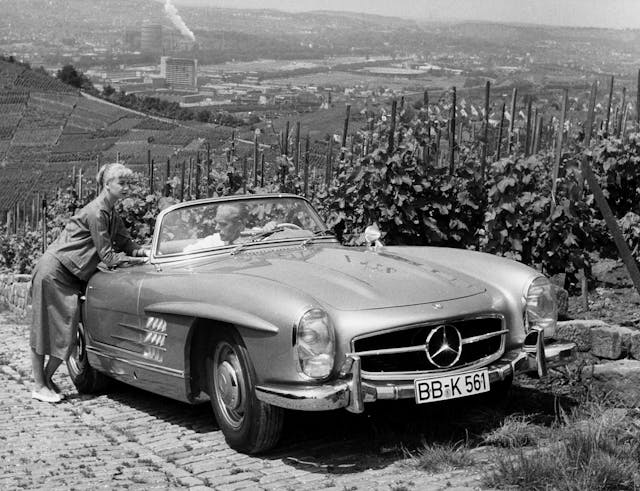Your guide to the past, present and future of the Mercedes-Benz SL
They’re getting very excited in Stuttgart. The new Mercedes-Benz SL is just months away, and the company will soon celebrate 70 years since the first “Sportlich Leight” appeared. In fact, they’re so excited that the Mercedes-Benz Museum is prematurely opening an exhibition titled “The Fascination of the SL—a Dream Car for 70 Years.” With nine cars on show representing all eight generations of simulated S-bends, the exhibition will run from October 22 through May 15, 2022.
We’ve also curated our SL expertise, condensing it into this guide to the septuagenerian sports car. So whether you’re looking for a Carrera Panamericana winner, a Bobby Ewing Benz, or eagerly awaiting the next generation, we’ve got you covered.
W 194
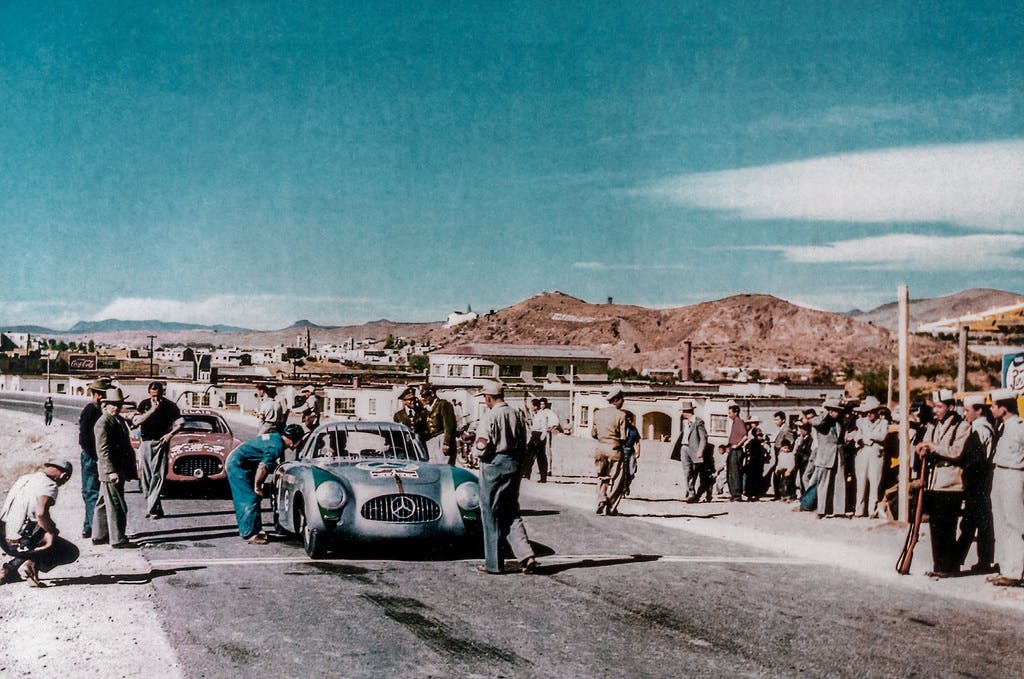
Mercedes-Benz’s return to motor racing after the war was spearheaded by an all-new sports car. The 1952 300 SL, designed by Rudolf Uhlenhaut, would have to make do with the M194 engine from the 300 sedan, so saving weight was critical to building a race winner. The tubular aluminum spaceframe Uhlenhaut devised came in at under 150 pounds, and all up the 300 SL weighed just 2497 pounds. Adding a pair of triple-barrel Solex carburetors to the 3.0-liter motor raised its output to around 175 horsepower, and the aerodynamic bodywork aided its 160-mph top speed. That did mean the engine had to be set at an angle of 50 degrees in order to fit, however. The car was an immediate success on the racetracks and road circuits of the world, winning the 1952 Le Mans 24 Hours alongside wins at Bern-Bremgarten, Nürburgring, and the gruelling Carrera Panamericana. Just 10 were made before Mercedes replaced it with the SLR. The oldest existing SL, chassis no. 2, is the star of the Mercedes museum exhibit and cautiously valued at in excess of $15 million. Not that Mercedes would ever sell it.
W 198

It’s said that the production version of the 300SL is the car that saved Mercedes-Benz. Max Hoffman, the company’s U.S. importer, believed there was a market for a road-going version of its successful racer—a halo car to rebuild the brand after the war. He was right. Launched at the 1954 New York Auto Show, the SL was insanely expensive at $6820 (almost $70K today), but American buyers soon snapped up the 1000 cars that Hoffman had ordered from the factory. The 300SL largely retained the looks of the race car, although the famous Gullwing doors gave slightly easier access to the interior than the early racers. One further improvement was the fitment of Bosch mechanical direct fuel injection, which raised the power output to 212 hp. For 1957, a convertible 300SL was introduced, setting the scene for all future models. An original ’54 Gullwing has a #1 (Concours) condition value of $1.4 million.
W 121
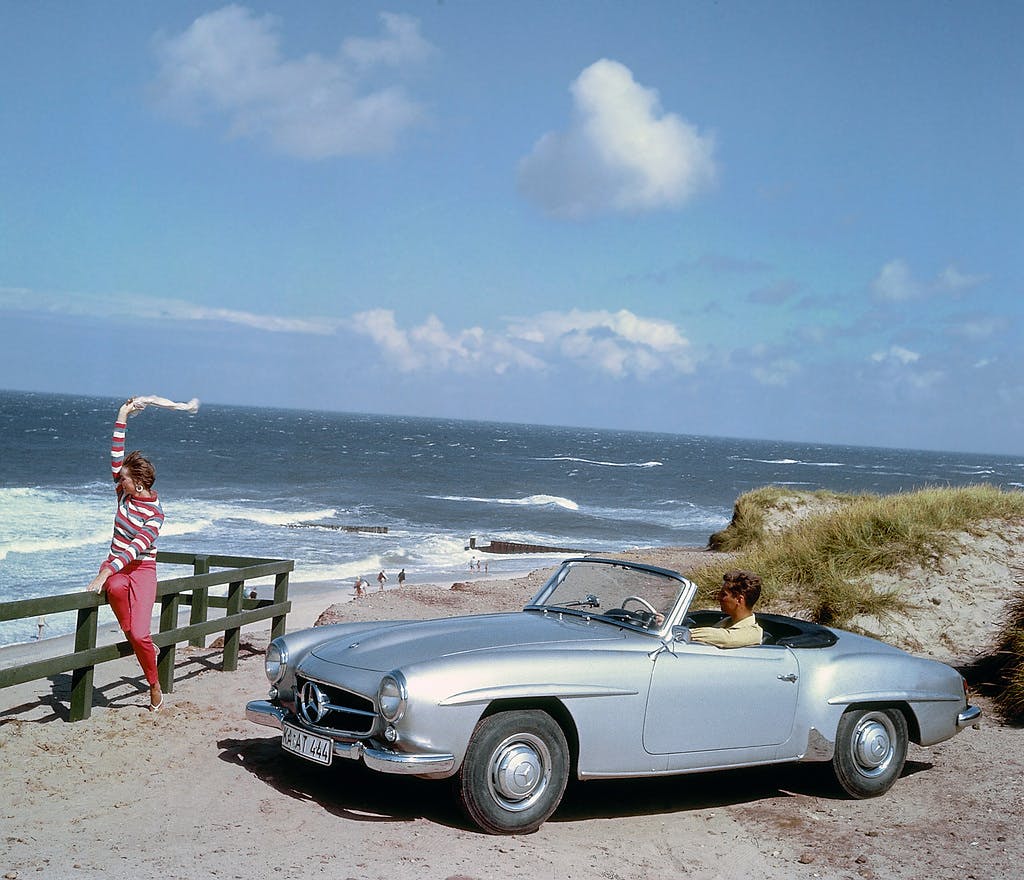
Revealed as a prototype alongside the 300SL, the 190SL convertible had the show but not quite the go of its big brother. Based on the floorpan of the humdrum 180 Ponton sedan, its four-cylinder motor could muster only 120 hp. Still, it looked lovely and was a smooth drive, even if it cost over $1000 more than a Corvette of the day. Getting Paul Newman to advertise the 190SL was a shrewd move, and Hoffman found it an fairly easy shift, with 10,000 models being sold Stateside. An early 1955 model in #1 Concours condition is worth $185,000 today. If you’re tempted, check out our Market Spotlight story.
W 113

Mercedes offered a detachable hard top with its 190SL and 300SL roadsters, but the SL introduced at the 1963 Geneva Motor Show would soon become best known for its concave removable roof, which some wag once suggested resembled a pagoda. The styling was a departure from the curves of its predecessor but no less attractive as a result, just a bit more boxy. A six-cylinder engine was standard, with the 2.3-liter unit offering 148 hp. A four-speed auto was available and proved to be the favorite among U.S. buyers. That said, only around a quarter of the 19,831 230SLs built were sold in America. In 1967, the engine was enlarged to 2.5-liters with no change to the power output, but 1967’s 280SL saw a leap in performance with 168 hp. By the time the W113 ended production in 1971, 19,440 SLs were driving on American roads, out of a total production of 48,912. The first 230SLs in #1 Concours condition now fetch $138,000, although you can pick one up for less than $40,000 (250 and 280 SLs are worth more). Learn what it’s like to own a 280SL Pagoda.
R 107
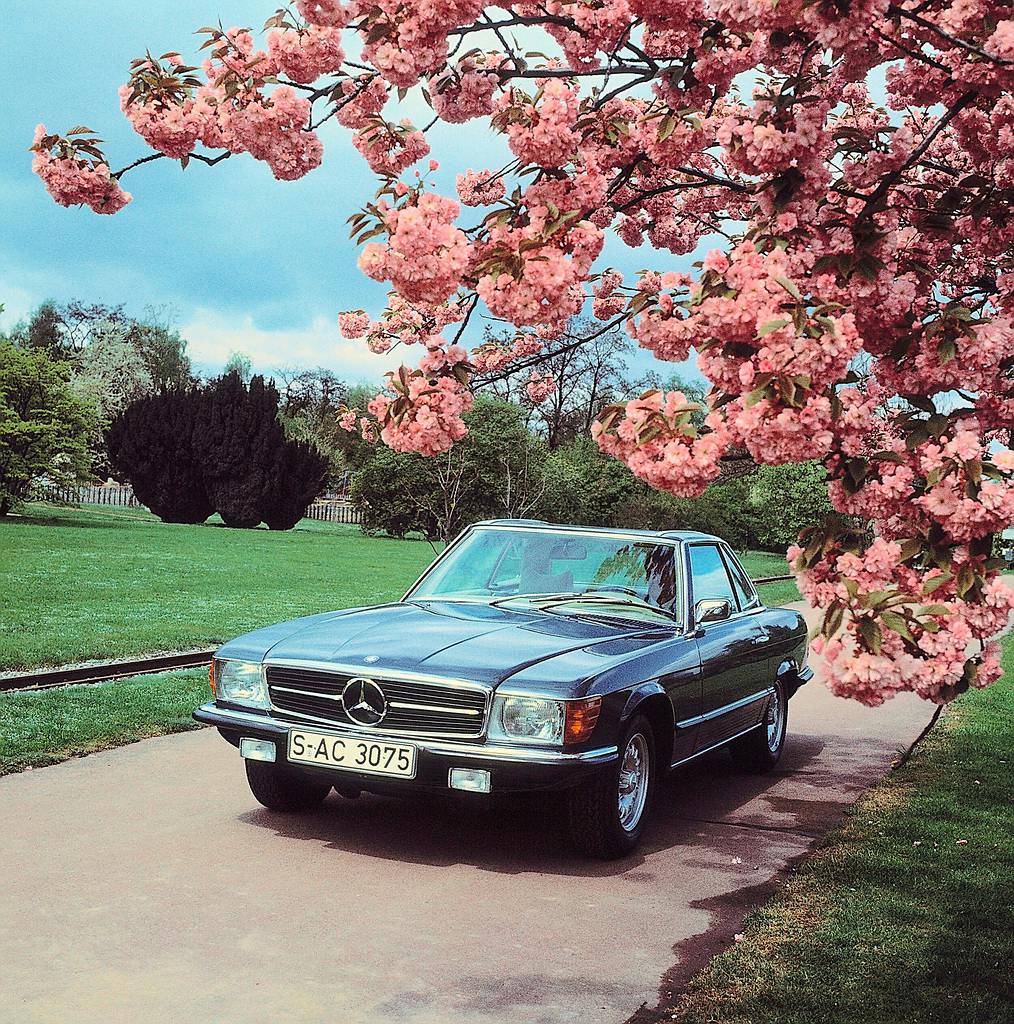
The long-lived 1971–89 SL will for many always be remembered as the Bobby Ewing Benz, regularly appearing on prime time TV cruising through Dallas. The squared-off styling evolved, and the car grew a little in stature, but most notable was the expansion under the hood. The SL now came with V-8 power. The 4.5-liter lump produced 190 hp in the earliest 350SL, but losing a little as it was reborn as the 450SL. From 1981–85, the emissions-throttled 380SL made just 155 hp. Enthusiasts would have to wait until 1986 for a car that could really justify the “sport” part of the SL name, when a 227 hp 5.5-litre 560SL arrived. Despite this, over 200,000 R 107 SLs were sold in the USA—that’s two-thirds of all made. Find out if this era of SL is a wise investment.
R 129

After almost two decades with precious little change, the SL made a giant leap into the 1990s with the R 129 model. It was bigger again, with 2+2 seating, and it was more technically advanced than ever before, with such features as an automatic rollover bar and electronic damping. A six-liter V-12 became the 389-hp flagship for the fleet. For those more concerned with efficiency, both V-8 and straight-six motors were also available in the more angular R129, and they accounted for more than half the car’s sales. A 1993 V-12 600SL in #1 Concours condition is worth $56,500. Is the R129 SL a new star in the Mercedes-Benz market?
R 230

Replacing the popular R 129 in 2001 was the job of the R 230, which made a dual debut at the Frankfurt and Bologna Motor Shows. A little softer in the styling and with an integrated folding hardtop offering the best of convertible and coupe, the SL was now an all-V lineup. The entry-level SL 350 (note the reversal) came with a 242-hp 3.7-liter V-6, the SL 500 packed a 5.0-liter 302-hp V-8, and the SL600 came with a 6.0-liter Bi-turbo V-12 providing 493 hp. By now AMG had been absorbed into Mercedes-Benz world, and the Afalterbach tuning firm provided two boosted versions. The SL55 AMG added a supercharger to the V-8 which matched the V-12’s output, while the SL65 AMG dialled up the pressure to deliver over 600 hp. Of all the R 230 SLs, it’s the 2008 Black Edition that’s probably the most desirable. Lightweight with a fixed roof, plenty of carbon fiber, a wide-track body, and retractable rear spoiler, it was the raciest SL to date. As such, a #1 Concours quality car is worth $315,000. For a more affordable R 230 take a look at the SL65 AMG.
R 231

The current—and soon to be replaced—SL launched in 2011. Once more it grew in size, but thanks to the use of an aluminium spaceframe chassis some of the extra weight was offset. Although more aggressively styled, it hardly marked a sea change in SL history. After initially carrying over the 3.5-liter V-6, it was replaced in the entry-level model by a 328-hp 3.0-liter version dubbed SL 400 (and later SL 450 with a bit more oomph). Twin turbos were now standard across the range, peaking with the 6.0-liter SL 65 AMG and its 621-hp V-12. Nearly-new SL63 AMGs are still fetching almost $150,000. A future classic?
R 232
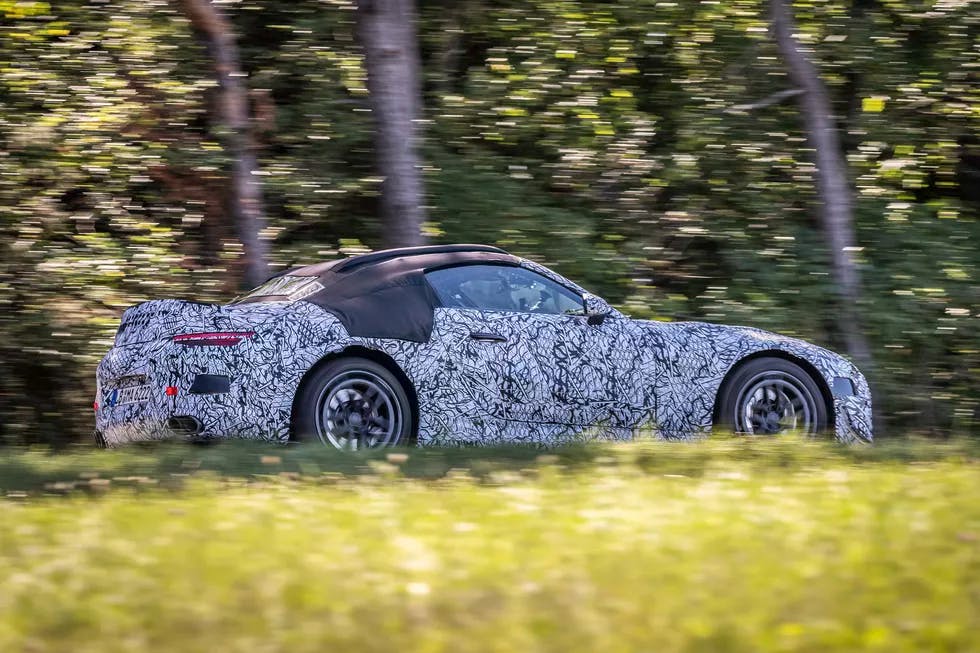
Next year will see the SL born again for the ninth time. It’s a completely new model as befits the 10-year gap since the last one. Mercedes-Benz is still keeping the final details to itself (while its sells the remaining R231s), but we do know that the 2022 car will feature 2+2 seating and a fabric roof. It’s also set to be an all-AMG lineup, with turbo six-cylinder and turbo V-8 power. Check out the latest spy shots.
